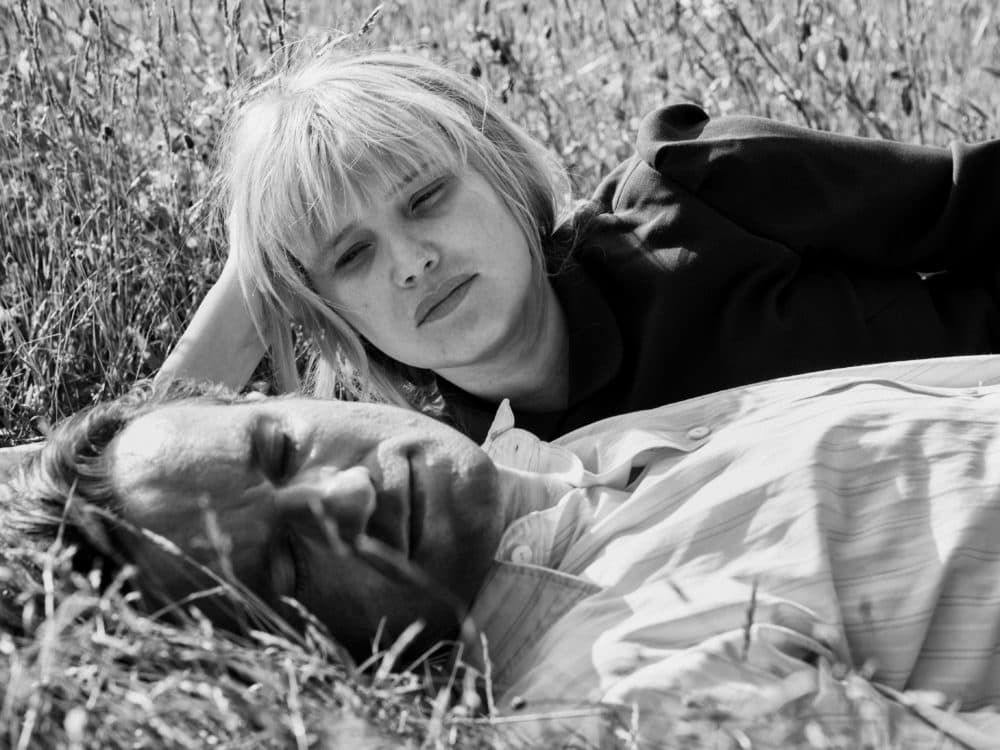Advertisement
Review
'Cold War' Tells A Tumultuous Love Story Against The Backdrop Of The Iron Curtain

A sprawling, three-hour epic crammed into 88 minutes, writer-director Paweł Pawlikowski’s “Cold War” is a marvel of concision. Here’s a love story spanning almost two decades of seismic geopolitical shifts, with our reckless, star-crossed lovers swept away and then dashed upon the rocks of history. But Pawlikowski renders it in clipped ellipses; a movie of furtive kisses and stolen glances. It’s all short, punchy scenes and sad songs with entire years left off-camera to our imaginations. The story skips like a stone across time, to devastating effect.
We begin in 1949 with Wiktor (rumpled, handsome Tomasz Kot) traveling the impoverished villages of postwar Poland, recording locals performing old-timey folk songs in the manner of musicologist Alan Lomax. His shifty-eyed driver Kaczmarek (Borys Szyc) is less than impressed by the ethnographic studies — "where I’m from every drunk sings like this" — but he’s also got enough foresight to see a possible political upside in these proletariat anthems. Pretty soon they’re putting together a traditionalist revue that becomes all the rage in Warsaw.
Wiktor’s motives come from somewhere more artistic, as well as below the belt. At auditions he’s instantly smitten with teenage peasant singer Zula (Joanna Kulig) who’s a bit of a fraud, but a dazzling one. She’s got a messy, violent past and spellbinding eyes — we can tell he’s a goner from the first notes she belts out. An idealistic producing partner with whom Wiktor sometimes shares a bed sees the writing on the wall and politely excuses herself from the movie, right around the time Kaczmarek has the troupe start singing odes to Stalin.
Zula and Wiktor are one of those couples who are wildly, passionately in love but probably shouldn’t be in the same room together for very long. There’s no real honeymoon period here — even one of their earliest romantic assignations ends with her hurling herself into a river — amour fou raging against the backdrop of a stealthily rising Iron Curtain. He defects. She doesn’t. They spend the next dozen or so years repeating a vicious cycle of either trying to get back together or trying to get as far away from each other as possible, their self-destructive urges assisted by one of the more tumultuous periods in Eastern European history.
I suppose in synopsis this all sounds rather harsh, which does a disservice to the sheer sumptuousness of the filmmaking. Pawlikowski and cinematographer Lukasz Zal have shot “Cold War” in lush, high-contrast black-and-white, an impossibly gorgeous chiaroscuro of smeared lipstick and cigarette smoke. (A mid-movie idyll in neon-lit, 1950s Paris is one of those scenes you’ll wish you could live inside.) Using the boxy, 4:3 aspect ratio they keep these characters penned in by the constricted frames, with increasing amounts of headroom pushing them further and further down toward the bottom of the screen. It’s like we can see the whole weight of the world bearing down upon Wiktor and Zula’s shoulders.

Pawlikowski won Best Director at last year’s Cannes Film Festival, and it’s tough to think of a recent picture more carefully conceived for the camera. So much of the storytelling is implied, we’re trusted to read a gesture or a raised eyebrow and write the rest of the scenes ourselves. Every frame is fraught with important information, giving us precisely as little as we need before jumping ahead again in time. In many ways his approach is the polar opposite of Alfonso Cuarón’s roving, endlessly expansive “Roma.” The visuals in “Cold War” are densely packed and pointedly purposeful.
He only cuts loose for the musical numbers. Notably absent an orchestral score, “Cold War” is soundtracked mainly by on-camera performances of the tunes from the times, ranging from foot-stomping Polish folk to smoky Parisian torch songs and even some Calypso commie propaganda. The already impressive Kulig really comes to life in these sequences, using them as a release valve for the character to express yearnings and fears she could never articulate.
Indeed, maybe my favorite scene from any film last year finds Zula hearing rock 'n' roll for the first time, as Bill Haley & His Comets’ transformational “Rock Around the Clock” booms through a French nightclub. Kulig’s eyes alight in wonder and her body begins to move as if involuntarily, dancing with drunken abandon and elation. Pawlikowski’s normally locked-down camera suddenly soars up and around to the beat, the whole movie flooded with an intoxicating sense of freedom.
But like every moment of agony or ecstasy in this film, it is but a flicker. Humphrey Bogart once famously said that the problems of two little people don’t amount to a hill of beans in this crazy world. Dwarfed by the enormity of history happening around them, the grand passions of Wiktor and Zula are visualized as even less than a hill of beans. Pawilkowski’s final shot is of a small gust of wind momentarily ruffling some tall blades of grass in a field. Then it’s gone.
